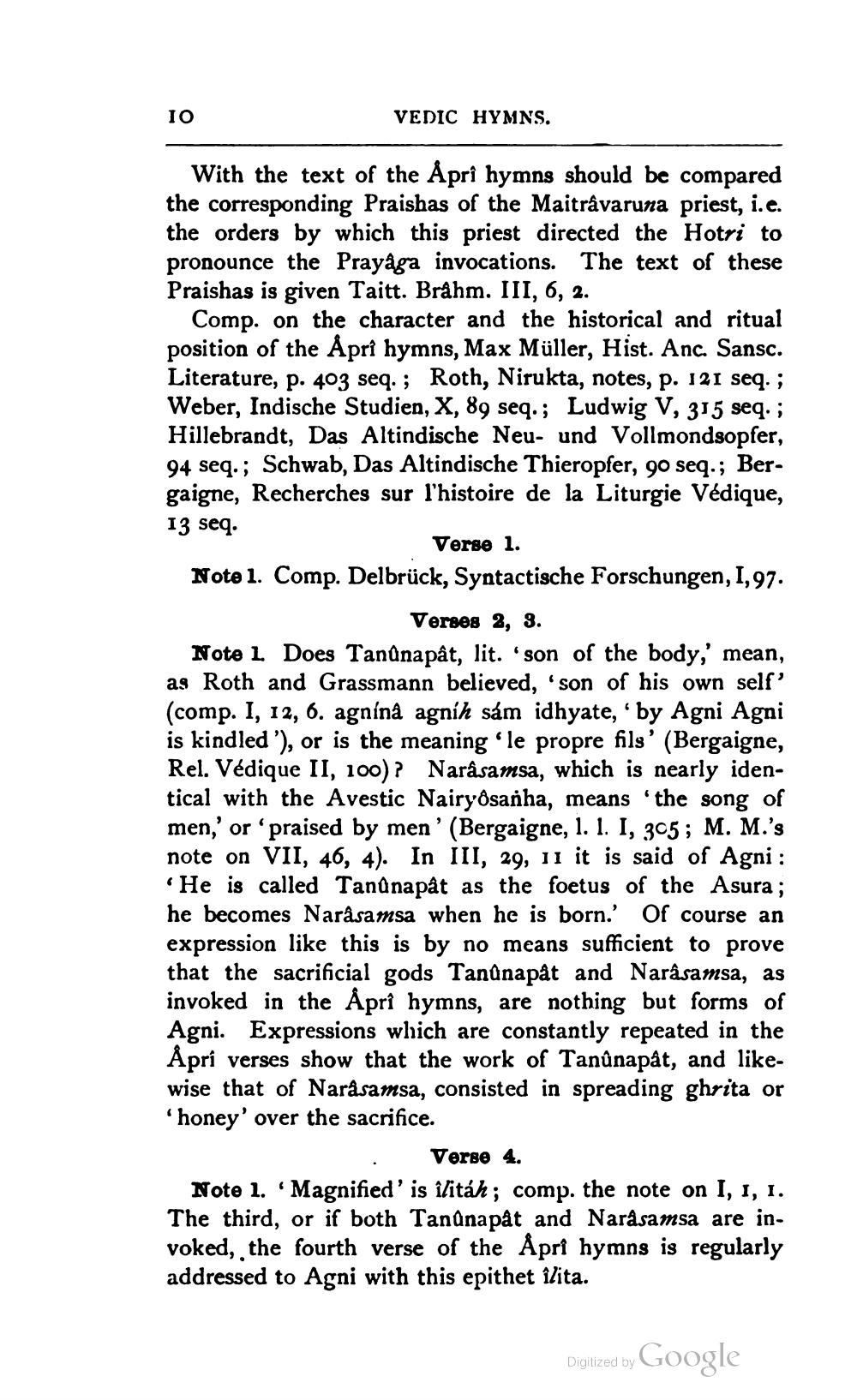________________
IO
VEDIC HYMNS.
With the text of the Aprî hymns should be compared the corresponding Praishas of the Maiträvaruna priest, i.e. the orders by which this priest directed the Hotri to pronounce the Prayaga invocations. The text of these Praishas is given Taitt. Bråhm. III, 6, 2.
Comp. on the character and the historical and ritual position of the Apri hymns, Max Müller, Hist. Anc. Sansc. Literature, p. 403 seq. ; Roth, Nirukta, notes, p. 121 seq. ; Weber, Indische Studien, X, 89 seq.; Ludwig V, 315 seq. ; Hillebrandt, Das Altindische Neu- und Vollmondsopfer, 94 seq.; Schwab, Das Altindische Thieropfer, 90 seq.; Bergaigne, Recherches sur l'histoire de la Liturgie Védique, 13 seq.
Verse 1 Note 1. Comp. Delbrück, Syntactische Forschungen, 1,97.
Verses 2, 3. Note 1. Does Tandnapât, lit. 'son of the body,' mean, as Roth and Grassmann believed, son of his own self' (comp. I, 12, 6. agninà agníh sám idhyate,' by Agni Agni is kindled '), or is the meaning ‘le propre fils' (Bergaigne, Rel. Védique II, 100)? Narasamsa, which is nearly identical with the Avestic Nairyösanha, means 'the song of men,' or 'praised by men' (Bergaigne, 1. 1. I, 305; M. M.'s note on VII, 46, 4). In III, 29, 11 it is said of Agni : • He is called Tanūnapât as the foetus of the Asura; he becomes Narâsamsa when he is born. Of course an expression like this is by no means sufficient to prove that the sacrificial gods Tanûnapåt and Narasamsa, as invoked in the Aprî hymns, are nothing but forms of Agni. Expressions which are constantly repeated in the Åpri verses show that the work of Tanûnapát, and likewise that of Narasamsa, consisted in spreading ghrita or 'honey' over the sacrifice.
Verse 4. Note 1. "Magnified' is ilitáh; comp. the note on I, 1, 1. The third, or if both Tandnapát and Narasamsa are invoked, the fourth verse of the Apri hymns is regularly addressed to Agni with this epithet îlita.
Digitized by Google




